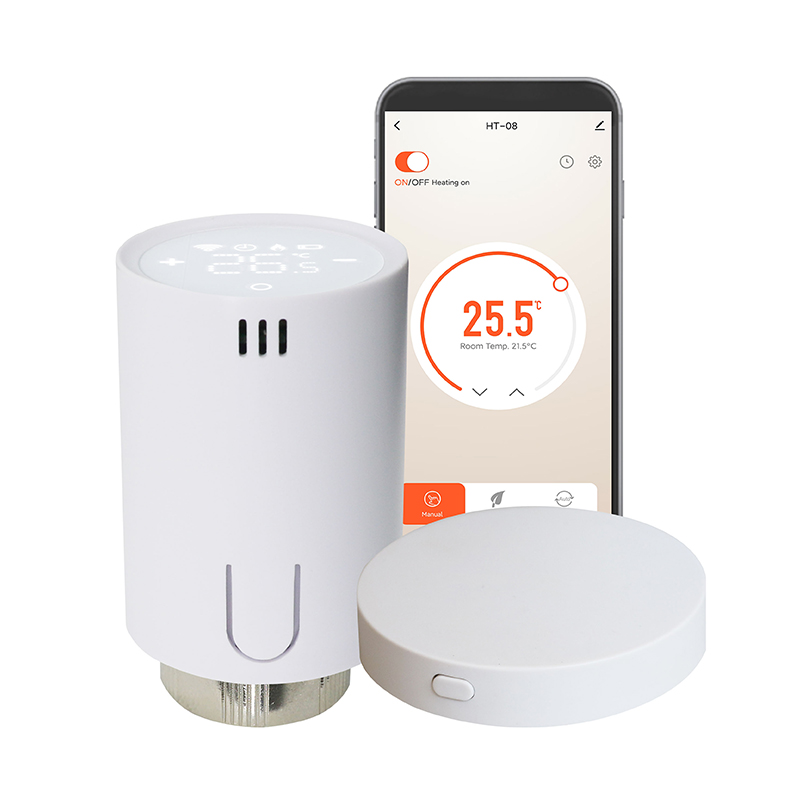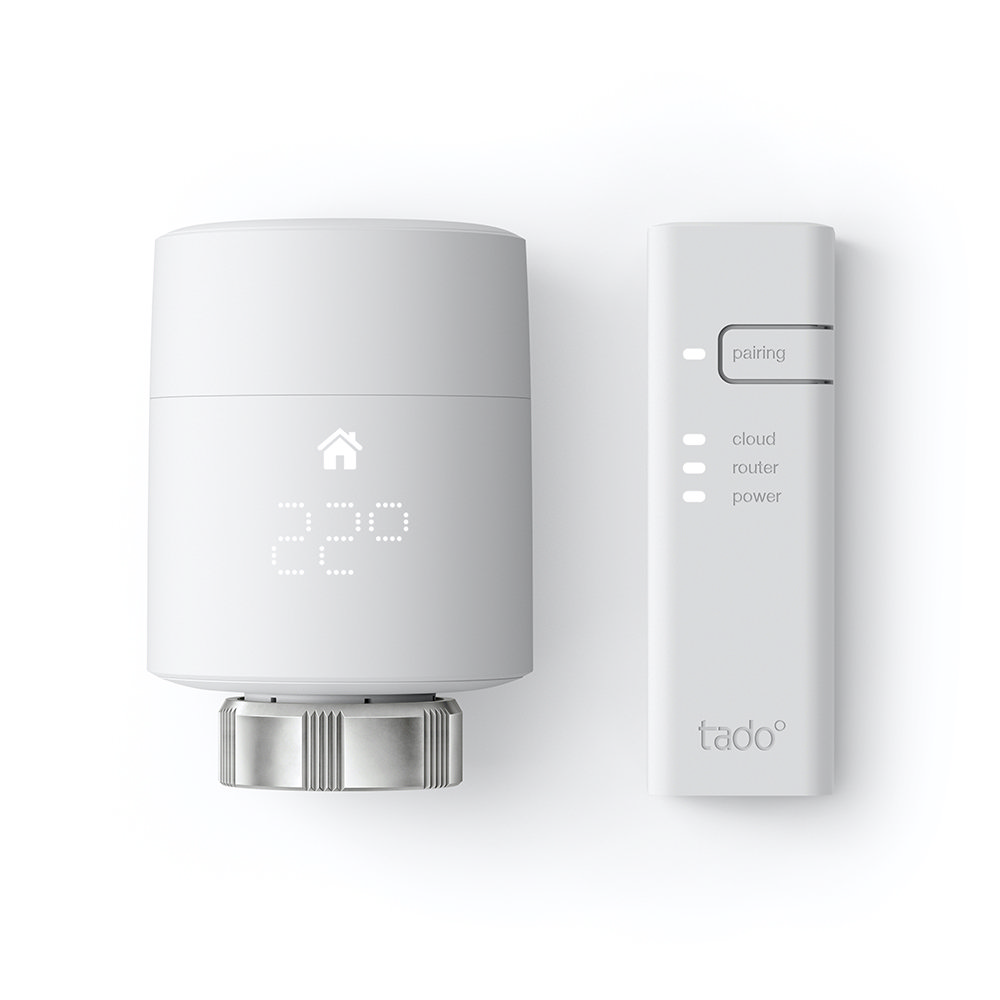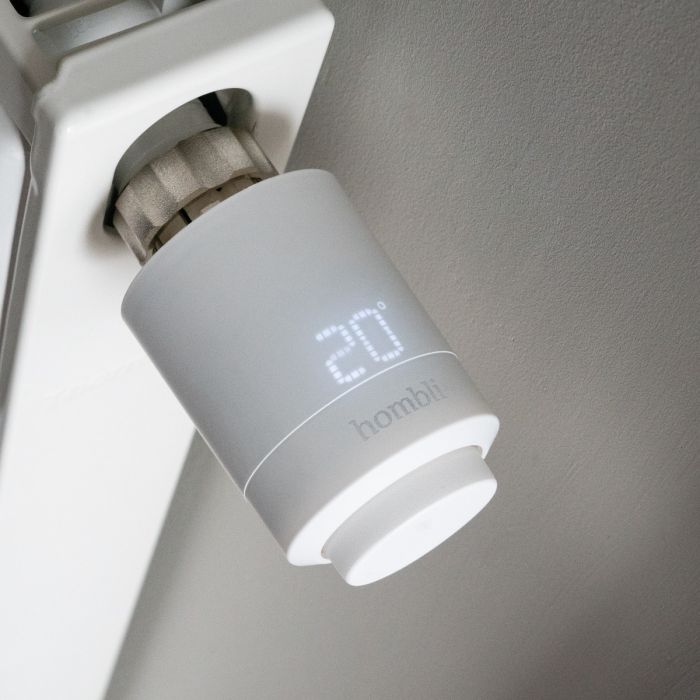Introduction to Smart Radiator Thermostats
Key Features and Basic Operations
Smart radiator thermostat bring cutting-edge technology to your home heating. These devices allow for precise control over each radiator’s temperature. They replace traditional manual valves and thermostatic radiator valves (TRVs) with smart, programmable controls. Using a smartphone app, users can adjust temperatures from anywhere. Key features include remote access, energy-saving schedules, and room-specific heating.
Operation is simple. Start by attaching the smart thermostat to your radiator valve. It pairs with a home automation hub via Wi-Fi or Zigbee protocols. Once connected, you can set temperature levels and create heating schedules through the app. You can also control the thermostats with voice commands via systems like Alexa and Google Home.
These thermostats come with sensors that measure room temperature. They adjust the radiator’s heat output to maintain the set temperature. This provides consistent and comfortable warmth throughout your home. Smart radiator thermostats often feature colorful backlit displays. These displays show temperature settings and allow for easy adjustments, even in the dark. The battery life for these devices is typically around one year, minimizing maintenance.
With basic operations catered to user-friendliness, smart radiator thermostats are a convenient upgrade. They are integral to a more efficient and personalized home heating experience. By embracing these modern solutions, you enhance comfort and save on energy costs.

Benefits of Smart Radiator Thermostats
Smart radiator thermostats provide various advantages for efficient home heating. These devices incorporate high-tech features that go beyond traditional heating methods. They offer substantial benefits including energy savings, precise temperature management, and convenient remote operations.
Energy Efficiency and Cost Savings
Smart radiator thermostats are pivotal in reducing energy consumption and, subsequently, heating costs. These devices allow users to program heating schedules tailored to their lifestyle, ensuring that heat is only used when necessary. For instance, heating can be turned down during the day when the house is empty and ramped up before occupants return. This targeted use of heating helps to minimize wasteful energy use, leading to significant cost savings over time.
Precision Temperature Control
Unlike traditional valves that provide a general temperature setting, smart radiator thermostats offer pinpoint temperature control. Each radiator can be set to a specific temperature, which is maintained by the thermostat’s sensors. This ensures an optimal heating environment suited to individual preferences or specific room requirements, enhancing overall comfort.
Remote Access and Automation
One of the standout features of smart radiator thermostats is the ability to control them remotely via a smartphone app. Whether you’re at work or on vacation, you can adjust your home’s temperature to your liking. Automation features also allow for integration with smart home systems, enabling voice commands through devices like Alexa or Google Home. This adds a layer of convenience and modernity, where you can manage your home heating without physical interaction.
Installation and Compatibility
Setting Up Smart Radiator Thermostats
Installing a smart radiator thermostat is straightforward and user-friendly. First, ensure your current radiator has a thermostatic radiator valve (TRV) or manual valve. If it has a TRV, you can easily swap it with the smart radiator thermostat. For radiators with manual valves, a replacement with a TRV might be necessary, which could require professional assistance.
Follow these steps for installation:
- Remove the existing valve from your radiator if replacing it.
- Attach the smart radiator thermostat using the provided adapters. These adapters ensure compatibility with most radiator valves.
- Insert batteries into the smart thermostat – most models use standard batteries which last about a year.
- Connect the thermostat to your home automation system or hub using Wi-Fi or a Zigbee protocol.
By following the manual or any instructional videos provided by the manufacturer, the setup should take only a few minutes.

Compatibility with Different Heating Systems
Smart radiator thermostats work well with most modern heating systems. They are designed to be compatible with various setups, including those controlled by central heating systems or individual room setups.
Key points regarding compatibility:
- Smart thermostats are ideal for systems already equipped with TRVs as they can directly replace them.
- For systems with manual radiator valves, upgrading to TRVs is required before installation.
- Check for support of smart home ecosystems such as Google Home, Apple HomeKit, or Amazon Alexa, for seamless integration and control.
Before purchasing a smart radiator thermostat, check the specifications to ensure compatibility with your existing home heating system. This guarantees optimal performance and leverages the advanced features of smart radiator thermostats.
Advanced Features
The smart radiator thermostat offers advanced features that elevate your home’s heating efficiency and comfort.
Geofencing and Multi-Home Support
Geofencing is a notable feature of smart radiator thermostats. It uses your phone’s location to control your heating. It turns up the heat as you approach home. This means you always come back to a warm house. For those with multiple properties, multi-home support allows separate settings for each location.
Device Grouping and Synchronization
Device grouping is another smart function. It lets you link several radiators in a single room. This way, they work together efficiently, providing even heat distribution. Synchronization ensures that all radiators react together to temperature changes.
External Temperature Sensing and Adjustments
External temperature sensors greatly improve heating accuracy. These sensors can be placed in different room areas for precise temperature readings. The smart thermostat then adjusts the radiator’s heat output, ensuring the entire room is comfortable.
Comparison with Traditional Valves
When considering an upgrade to a smart radiator thermostat, it’s crucial to understand how they differ from traditional valves. Let’s compare them.
Differences Between Manual, TRV, and Smart Valves
Manual valves are basic; they require you to adjust the heat by hand. TRVs, or thermostatic radiator valves, have a sensor for air temperature and automatically regulate heat. Smart radiator thermostats take this further with precise digital temperature settings and remote control options via a phone app or voice commands.
In essence, manual valves offer the least control, TRVs add automatic temperature-based adjustments, and smart valves bring in remote control and exact temperature programming.

Advantages of Upgrading to Smart Radiator Thermostats
Switching to smart thermostats from manual or TRV valves brings several advantages:
- You gain precise control over the temperature in individual rooms.
- Smart valves provide the ability to create heating schedules, saving energy when you’re not home.
- Remote access allows for adjustments to heating from anywhere, enhancing convenience.
- Integration with smart home systems adds voice control and automation features.
- Features like geofencing can enhance efficiency and comfort by heating your home in anticipation of your arrival.
By upgrading to smart thermostat technology, you establish a more efficient and responsive heating system that adapts to your lifestyle and helps to reduce energy consumption.
Smart Home Integration
Smart radiator thermostats easily integrate with various home automation systems, enhancing convenience and control over your home’s heating.
Compatibility with Home Automation Systems
Smart radiator thermostats are compatible with most popular home automation systems like Google Home, Apple HomeKit, and Amazon Alexa. This compatibility ensures you can use existing systems without needing extra equipment.
- Apple HomeKit: Control your heating with Siri or through the Apple Home App.
- Google Home: Integrate with Google Assistant for voice commands and routine settings.
- Amazon Alexa: Use Alexa to adjust temperatures and set up routines with simple voice commands.
These integrations help to streamline your smart home setup and make controlling your heating more intuitive.
Voice Control and App Integrations
Voice control and app integrations are key features that elevate the usability of smart radiator thermostats:
- Voice Commands: Adjust your home’s temperature just by speaking to your virtual assistant. For example, say ‘Alexa, set the living room to 21 degrees.’
- App Control: Use smartphone apps to control your radiators from anywhere. This feature is perfect for adjusting your home’s temperature on your way back home or when on vacation.
By using smartphone apps or voice assistants, you can create schedules, make quick adjustments, and maintain optimal comfort in your home.
Smart radiator thermostats blend seamlessly into your smart home ecosystem, allowing for easy management and enhanced control.
Maintenance and Sustainability
Maintaining a smart radiator thermostat is simple and has a light impact on the environment.
Battery Life and Replacement
Battery life in smart radiator thermostats is impressive, often lasting up to a year. When the battery runs low, you replace it with a new one. Some models use standard battery sizes, making replacement straightforward. A good practice is to check the thermostat’s display or app for battery alerts. This helps ensure your heating isn’t interrupted due to a dead battery. Remember, proper disposal and recycling of old batteries is crucial for sustainability.
Environmental Benefits and Considerations
Smart radiator thermostats support a green lifestyle. They avoid energy waste by heating only when necessary. This reduces your carbon footprint. It also cuts down on fuel consumption from your home heating system. It’s important to note that these thermostats are made with materials that can be recycled. When upgrading or disposing of an old thermostat, find out how to recycle it in your area. Besides, choosing devices with long lifespans and low power needs helps the planet.
Conclusion
Summary of Smart Radiator Thermostat Benefits
Smart radiator thermostats provide numerous benefits that enhance home heating efficiency and comfort. Here’s a quick summary:
- Energy Efficiency: These thermostats conserve energy by heating only when necessary, thus reducing your bills.
- Precise Control: You can set specific temperatures for different rooms, ensuring personal comfort.
- Convenience: Adjust temperatures remotely using a smartphone app, or through voice commands via integration with home systems like Google Home and Alexa.
- Easy Installation: Setting up is simple and compatible with many radiator types, making it accessible to most homes.
- Eco-friendly: Smart thermostats contribute to an eco-friendly lifestyle by minimizing unnecessary heating and using easily replaceable batteries.
Recommendations for Optimal Use
To get the most out of your smart radiator thermostat, consider these tips:
- Program Schedules: Set heating schedules that align with your routine to save energy.
- Regular Updates: Keep the thermostat firmware updated to ensure efficient performance and security.
- Correct Placement: Place external sensors correctly for accurate temperature readings.
- Battery Check: Regularly check the battery life and replace batteries as needed.
- Integration: Fully integrate with your home automation system for seamless control and monitoring.
By following these tips, you can optimize your smart radiator thermostat for better performance and energy savings.